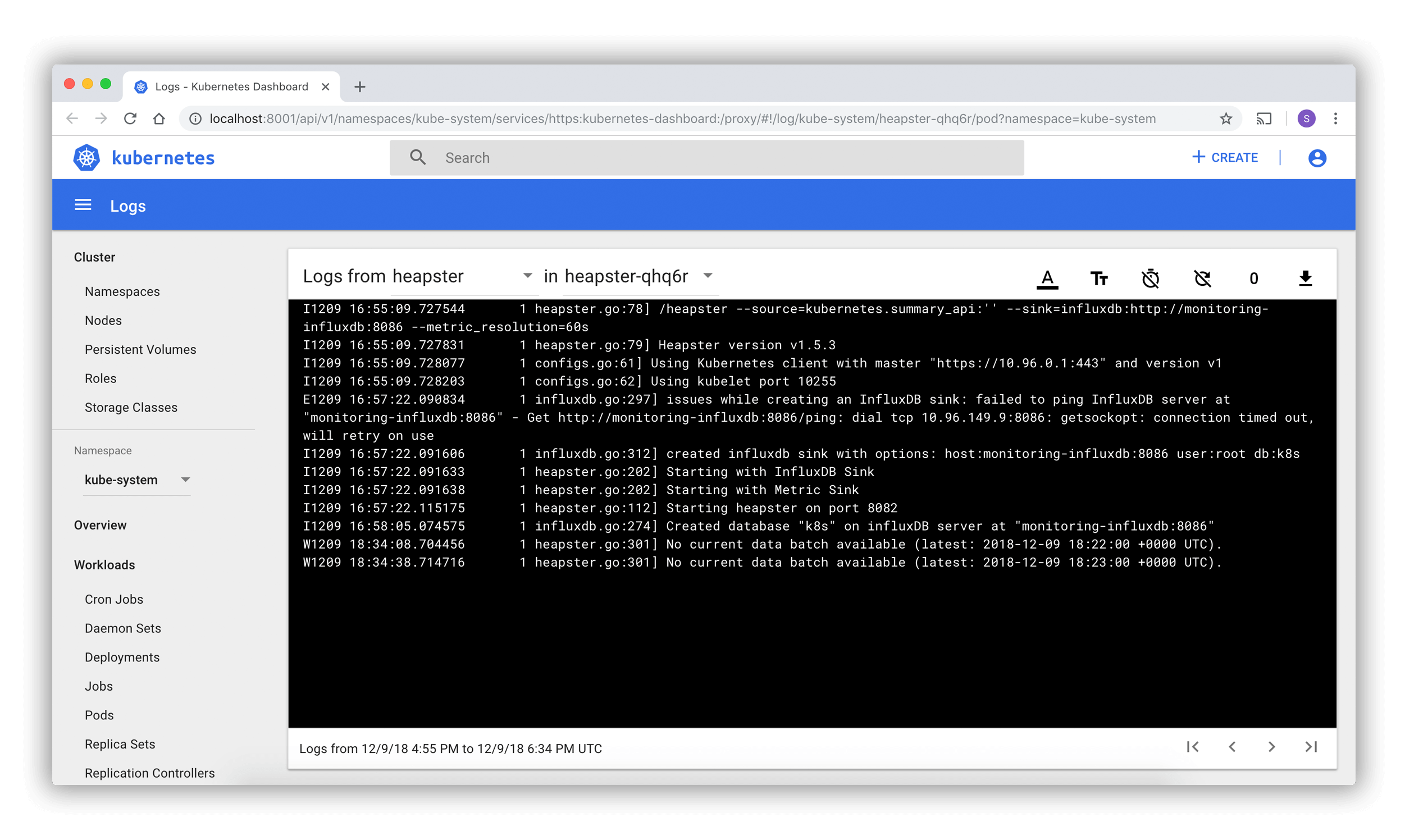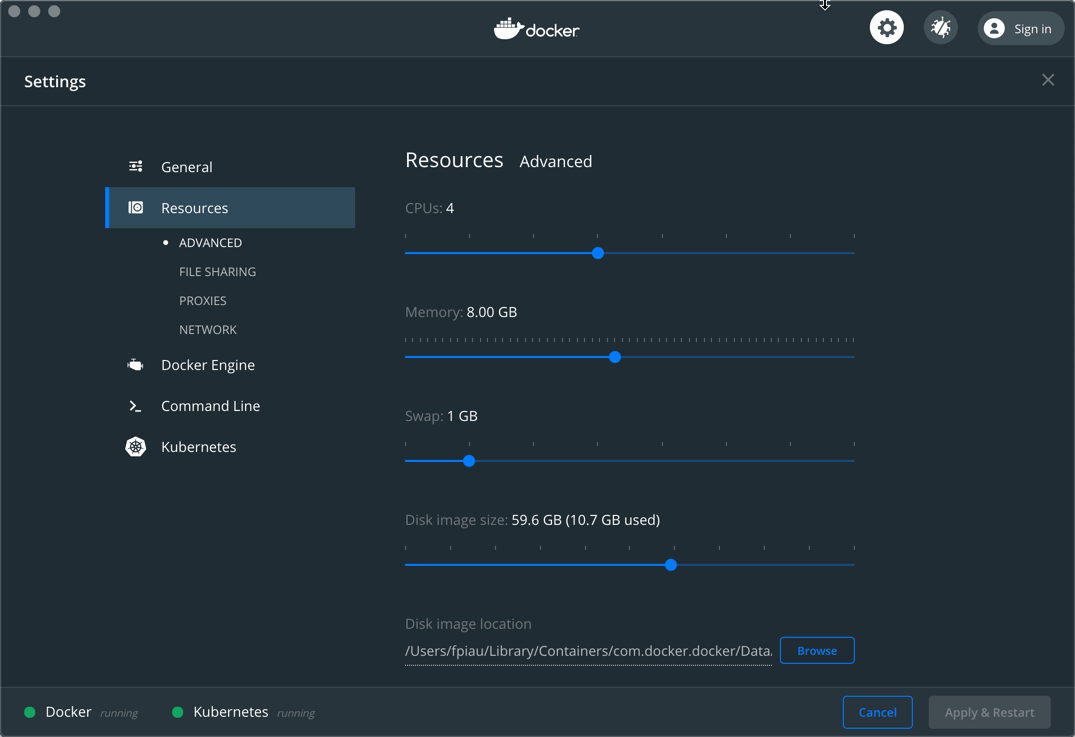Docker Para Kubernetes De Borde De Mac

The newer versions of Docker for Mac actually bring everything for the use of Kubernetes. Since the current documentation is not so optimal, I try it in my own way. Since I plan to further testing tutorials on this topic, this guide will serve as a basis.
In parallel using the Kubernetes container orchestrator. Resulting in the first turn-key workflow encompassing all steps for. In order to construct a microservice architecture for metabolomics we used Docker10. Analysis (OPLS-DA) which resulted in a clear separation between. AL, MAC, MC and NS. Una de las cosas que me encantan de mi trabajo es que me toca salir muy frecuentemente de mi zona de confort para solucionar las necesidades de los clientes. Este mes me ha tocado un caso del que he.
Preparation
Kubernetes is currently only supported via Docker Edge. Caution, if you switch from stable to edge all Docker images and containers will be deleted! If you are already using the Edge version, skip the following steps 1 till 3.
- Download Docker for Mac Edge Version… You can exit Docker for Mac while downloading.
- After successful download of DMG start the installation (Replace the old version).
- Start Docker and follow the instructions.
- Activate Kubernetes now via “Enable Kubernetes” checkbox and install the Kubernetes cluster. This can take a while, do not lose your patience!
- When the installation is finished you can check it.
Note, if you have already used minikube, you should now switch the cluster. You can switch between clusters at any time via GUI or command-line.
Now it’s a good time to know some more about current cluster, nodes, pods and namespaces. This will help to understand everything better!
As you can see, everything is working fine. The system is now ready for usage. By the way, have a look on your Docker images!
Deploying the Kubernetes Web UI Dashboard
Finally we deploy the Kubernetes Web UI Dashboard on our new Kubernetes Master as a Pod in namespace kube-system. The Dashboard is not installed/deployed by default. Although everything is possible via command-line, it can help to better understand and analyze the system.
You can skip authentication and jump directly to the dashboard. This step should may give you a hint. Never ever do the same in production!
That’s it already! Have a look on created dashboard and get familiar with your new Kubernetes environment.
Docker for Mac 18.01.0 CE is available for the general public. It holds experimental Kubernetes release running on Linux Kernel 4.9.75, Docker Compose 1.180 and Docker Machine 0.13.0. It is available only under Edge Release. Please note that this feature is still NOT available under Stable Release branch. This release brought a major fixes around insecure registry, VPNKit port, DNS timeout issues and many more which you can refer under Release Notes section.
[Updated – 29/01/2018 – Docker Inc. introduced Kubernetes context selector UI in the recent Docker for Mac 18.02 RC1 release. If you have Minikube already running on the same system, you can switch the context in between Minikube & docker for Mac flawlessly. Refer this for more information]
In my previous blog, I talked about how to build Kubernetes Cluster in 3 minutes using Kubectl tool which comes by default with this release. But what if you are a die-hard fan of Docker Swarm CLI like me, here is the good news – You can now use Swarm CLI to bring up Kubernetes Cluster. Under this post, I will show you how Swarm CLI can be used to bring up Kubernetes cluster in just 2 minutes.
Pre-requisite:
- Docker for Mac 18.01.0 CE Edge Release
- Enable Kubernetes under Preference > Kubernetes Tab
- Select Checkbox under Show System Container
A Quick 2-minutes ASCIINEMA video: Download whatsapp desktop client for mac os x.
Here is 2-minutes video which shows how to get started from Zero to NGINX web server setup. It initiate with 0 pods, 0 external service and 0 deployments in Kubernetes terminology. Under this video, we will use the familiar docker stack CLI to bring up K8s cluster and then cleaning up in no seconds.
Liked the video? You can refer this link for detailed instructions and further examples.
As I dig deeper into Kubernetes architecture, below links might be useful for anyone who want to learn Kubernetes concepts in detail.
Did you find this blog helpful? Feel free to share your experience. Get in touch @ajeetsraina.

If you are looking out for contribution/discussion, join me at Docker Community Slack Channel.